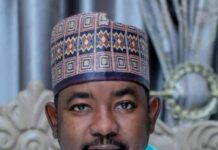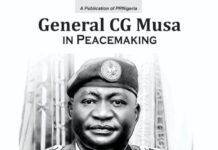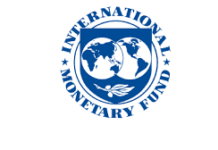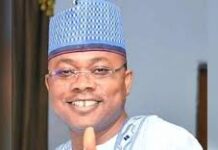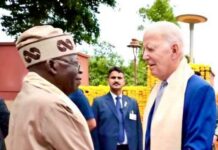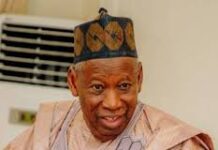Musings of Ruga girl: Journey Through ECOWAS, Peace Amidst Complexity
By Sumayya Abubakar
As I found myself nestled amidst the vibrant energy of the canteen, a chorus of conversations swirled around the recent political upheaval in Niger Republic. Seeking refuge from this ubiquitous topic, I discreetly reached for my phone, hoping for a digital escape.
To my bemusement, the virtual realm echoed the real world, forcing me to ponder the role of ECOWAS in navigating such intricate conflicts. A contemplative mood enveloped me, setting the stage for an enlightening conversation with Mallam later tonight.
A Quest for Peace: The ECOWAS Odyssey
Born from the ashes of the 1975 Lagos Treaty, the Economic Community of West African States (ECOWAS) emerged as a beacon of hope, aiming to intertwine economic prosperity and unity among its diverse member states. Its purpose resonated with elevating living standards, nurturing economic stability, and ushering in an era of African progress.
The roots of ECOWAS’ authority can be traced through a labyrinth of regional and international normative frameworks, including the touchstones of the AU, NEPAD, and UN. Since its inception, the ethos of cooperation, mutual assistance, and non-aggression has been woven into its protocols, exemplified by the protocols on non-aggression and mutual defense assistance.
Laying Foundations: Protocols for Peace and Progress
ECOWAS has not been content to merely lay foundations; it has wielded its influence to construct bridges of conflict prevention, resolution, and peace-building. Among its accomplishments stand the Protocol on Free Movement of Persons, an ode to fundamental human rights, and the Declaration of Political Principles, a testament to diplomatic wisdom.
An important chapter in this saga is the Revised Treaty of ECOWAS (1993), which imbued the organization with supranational authority, compelling member states to unite in the pursuit of conflict prevention. The Moratorium on Small Arms (1998), a symphony for conflict-sensitive development, introduced disarmament initiatives that evolved into the harmonious notes of the Convention on Small Arms and Light Weapons.
Obstacles and Aspirations: Navigating the ECOWAS Tapestry
While ECOWAS’ symphony of efforts has garnered applause, critical voices, including the African Development Bank, opine that progress has been ‘relatively insubstantial.’ The journey has been punctuated by ethnic, religious, and political divisions among linguistic blocs. Disparities in member states’ development, corruption’s corrosive influence, and the specter of unaccountability have cast shadows over ECOWAS’ path.
From Dream to Reality: Nurturing Collective Security
The call for homegrown solutions to Africa’s multifaceted challenges spurred the establishment of collective security systems. ECOWAS embraced this call, etching its name as the first African economic community to deploy peacekeeping troops. These troops shoulder the responsibility of restoring and maintaining peace within member states.
Read Also:
The ECOWAS protocol on conflict prevention, resolution, management, peacekeeping, and security serves as the compass guiding these peace missions. It acts as a bridge, connecting all stakeholders in negotiated agreements and addressing contentious issues such as the composition, role, deployment, and command-and-control structures of the peacekeeping force.
This protocol has guided the region’s leaders through the labyrinth of conflict resolution in nations like Cote d’Ivoire, Liberia, Guinea Bissau, Togo, and Ethiopia. Its footsteps paved the way for the Linas Marcoussis Agreement, the Accra Agreements, and the Comprehensive Peace Agreement (CPA). The protocol isn’t just a set of rules; it’s a tapestry woven from the threads of hope, dialogue, and collective endeavor.
Behind the Scenes: Unveiling ECOWAS’ Mechanism for Peace
Amidst the aromatic swirls of tea, I engaged Mallam in a discussion about the inner workings of ECOWAS’ mechanism for conflict prevention, resolution, management, peacekeeping, and security. Mallam’s seasoned voice narrated the tale of the protocol, signed in Lomé, Togo, in 1990.
This comprehensive framework aspires to guide the organization’s peace and security operations—a multidimensional orchestration encompassing conflict prevention, management, resolution, peacekeeping, humanitarian activities, and peace-building.
Three supporting organs fortify this mechanism: the Defence and Security Commission, the Council of Elders, and the Stand-by-Force. Yet, as Mallam illuminated, the mechanism’s effectiveness is intrinsically tied to its financial foundation. Article 36 of the protocol stipulates that the Executive Secretariat finances these activities through its annual budget, though recent experiences have underscored the need for a more sustainable approach.
Enter the vision of the Peace Fund—a concerted effort to source funding from a tapestry of contributors, including member states, international organizations, the private sector, NGOs, and development partners. This multifaceted funding approach seeks to breathe life into ECOWAS’ diverse array of activities.
Dreams and Dilemmas: Crafting a Path Forward
As our conversation ebbed, the tapestry of possibilities and challenges unfolded. ECOWAS’ journey to its envisioned future is both promising and daunting. Encouraging member states to ratify conflict prevention mechanisms and implement the community levy protocol signifies a collective commitment to peace.
The establishment of a peace fund stands as a beacon of hope for swift emergency responses. The imperative of gender inclusivity, aligned with Security Council Resolution 1325(2000), underscores the importance of balanced representation in peace and security programs.
As I gazed into the star-studded night, a vision emerged—a West African community thriving amidst technology, progress, and shared dreams. The symphony of progress swelled within me, and a soft smile painted my face. The stars twinkled as if applauding the aspiration of ECOWAS—a collective endeavor striving to weave a tapestry of peace across the vibrant landscape of West Africa.
Sumayya Abubakar is a development worker, she is an educationist, and peace builder. She is the lead of Plateau based Muryar Fulani Peace Initiative Network Inc. She runs a schools’ system for marginalised populations in Plateau state, North central of Nigeria and can be reached at [email protected]







